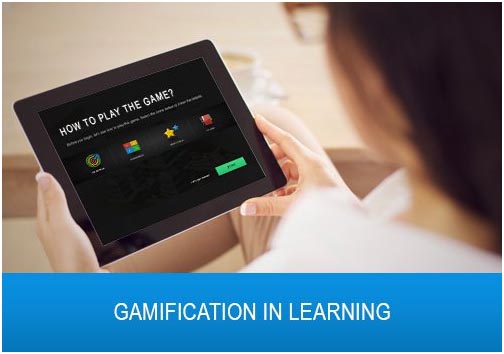
Introduction
Every year, significant investments are made in training and development programs. However, assessing their impact on business is a tough mandate. In this article, I list strategies and tips CLOs can use to measure and maximize their impact.
Background
CLOs make significant investments in training and development programs year-on-year. They are essential in enhancing employee performance and, more significantly, driving business results.
Majority of the trainings get delivered as planned, and are normally tracked for registrations, completions, timely completions, and assessment scores.
However, not much data is available on the impact of these trainings on business – and if they were able to demonstrate a clear gain that was sought. The need of the hour is as follows:
- To meet the mandate that the business seeks, you need to evaluate the effectiveness of training and development programs not just through the basic L&D metrics but by measuring their anticipated impact on business.
- Then, the focus should shift (from measuring the impact) to how can this impact be sustained.
This is a tough mandate as the process of training evaluation from the lens of how it impacts business is complex.
To do justice to it, there is a need for resources (manpower as well as technology) at several levels, and over an extended period of time. Often, the data collation is hampered by the existing technology (for instance, the LMS may not have adequate analytics or relevant dashboards). Or, there may not be adequate resources who can collate and analyze the data and generate actionable insights for the business.
In spite of these challenges and intrinsic complexity, CLOs need to create frameworks to measure the impact of training and development programs and then identify how they to sustain this momentum. In this article, I share 5 strategies that are easy to implement as well as several tips that can help them measure the impact of training and development programs and, more significantly, sustain the impact.
Strategy #1: Laying the Foundation – Factor for both L&D Metrics and Business Metrics
The focus of L&D teams during the Training Needs Analysis (TNA) is on the learning objectives and what strategy that would help them meet them. Once the training is rolled out, they typically would have the parameters to measure its effectiveness (this is termed as the L&D Metrics).
TIPS: What more needs to be done:
- Alongside, it is crucial to identify the gain the business is seeking. Then, you can look at the impact of training and development programs through the combined lens of the L&D Metrics and, more significantly, the Business Metrics.
- Additionally, you need to identify the Evaluation Model that will help you measure both.
Strategy #2: Identifying the right Evaluation Model to measure the impact of training and development programs
Identifying the Evaluation Model is the next crucial step. This helps in getting clarity on:
- What is being measured.
- How will it be measured.
- How will the evaluation outcome be processed.
TIPS: The success also rests on determining how the Evaluation Model should be adapted for:
- Different trainings: For instance, the approach for Compliance training would be remarkably different from a Soft Skills training or a Tool training.
- Different learning goals: For instance, the approach to measure learning acquisition is different from how you will ascertain if it was applied on the job. Similarly, the approach to validate the learning transference and behavioral change would be dramatically different.
TIPS: Also, the evaluation should not be limited just to assessments. Additionally,
- It should include how the training and development programs are helping learners apply the acquired knowledge on the job.
- It should also include how the training and development programs are impacting the key on-the-job indicators.
Strategy #3: Setting the stage with a holistic approach (To drive employee performance and behavioral change)
To ensure the training and development programs can create the required impact, many enablers need to be in place.
At EI, we use the holistic approach of a Learning and Performance Ecosystem that has several components that can be used to:
- Engage and motivate the learners.
- Offer strategies that create sticky learning experiences.
- Provide practice zones to gain further proficiency.
- Apply the acquired learning.
- Reinforce learning so that “Forgetting Curve” does not set in.
- Influence and trigger behavioral change.
- Maintain ongoing connect (post the successful completion of the training).
Additionally, we recommend:
- Avenues for Social or Collaborative Learning.
- Nudges for Self-Directed Learning.
TIPS: From this approach, here are 4 key enablers that will help:
1. Prior to the roll-out of the training and development programs – Measures to engage the learners
The challenges of overwhelmed employees who are not motivated to invest time for training is very real. It is very important to ensure that measures to engage and motivate the learners are put in place. These could include:
- Videos with messages from leadership on the significance of the training and development programs for the employees and the organization.
- Teaser videos that help learners see the value that they will get if they invest time on a given training (What Is In It For Me or WIIFM).
2. A holistic approach to design and deliver training and development programs (including Performance Support intervention)
Once the significance of the training and its value proposition for the learners is established, you can now look at further value adds that will ensure that learners register and complete the training. This could include:
- Personalized learning paths.
- Bite-sized learning on the device of the learners’ choice (Microlearning based training delivered on Mobile devices).
3. Also, invest in a Learning and Performance Ecosystem based approach and supplement the formal training with nuggets to:
- Reinforce.
- Practice.
- Apply.
4. Furthermore, invest in just-in-time learning aids or job aids that are available to the learners within their workflow and can help them when needed (these aids do not need them to go the LMS).
Strategy #4: Checkpointing periodically and showcasing the impact and the value to the business (and reconfigure/tweak the approach, as required)
Once the training is delivered and duly completed by the learners, the focus shifts to ascertaining its impact on the business. Using the Evaluation Model identified to measure the Business Metrics, the data on the impact needs to be collected and analyzed.
TIPS: It is also important to showcase this value to the business and based on the analysis, you can reconfigure or tweak the approach.
Alternatively, you could look at adding required components into the learning journey that will help you demonstrate the value or gain that the business is seeking.
Strategy #5: Sustaining the impact
Once you are able to see the impact of the training and development programs, it is time to invest in measures that will help you sustain this momentum.
TIPS: Here are couple of approaches that would help:
- Besides formal training, factor for ongoing connects by offering learners with resources to:
- Reinforce.
- Challenge.
- Practice.
- Gain proficiency.
- Encourage them toward the path of continuous learning through:
- Social Learning.
- Communities of practicing excellence.
- Self-Directed Learning .
- Curated content so that learners come back for more.
- Inclusive learning by encouraging active participation – through User Generated Content (UGC).
As I had mentioned in the beginning of my article, the task of measuring and sustaining the impact of training and development programs is tough and there is no single approach that can help you achieve this. I hope my practical insights and strategies provide practical approaches that you can use.
Meanwhile, if you have any specific queries, do contact me or leave a comment below.
Read More
- Free eBook: eLearning Trends In 2020: Featuring Tips On How You Can Leverage Them For Learning, Performance Gain, And Behavioral Change
- How To Measure The Business Impact Of Your Workforce Training Programs
- eLearning ROI Case Study: How To Maximize Your Returns
- 5 Tips To Maximize The ROI Of Online Training
- How Can You Measure The Learning Effectiveness Of Online Courses And Create A Positive ROI?



